Menus
- Full R-life
- Yamaha step on the gas
- New: Honda
- Yamaha WR 125 X / R
- Yamaha XJ6 Diversion ABS
- Yamaha XVS 950 A Midnight Star
- Data Yamaha WR 125 X / R
- Data Yamaha XVS 950 A Midnight Star
- Data Yamaha XJ6 Diversion ABS
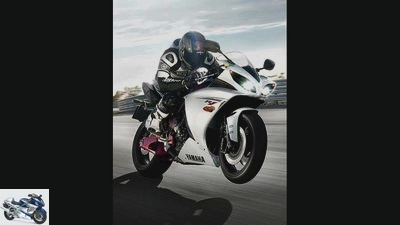
Yamaha
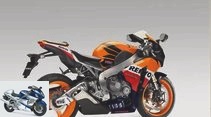
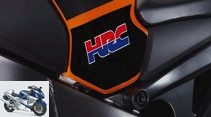
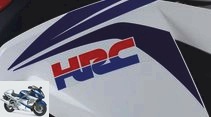
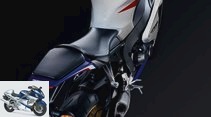
28 photos
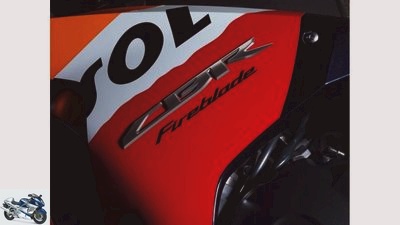
Honda
1/28
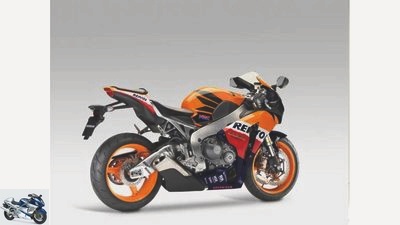
Honda
2/28
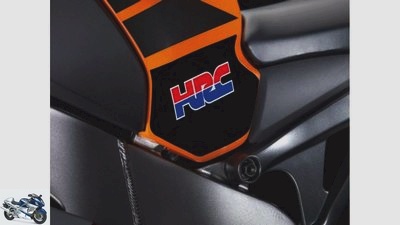
Honda
3/28
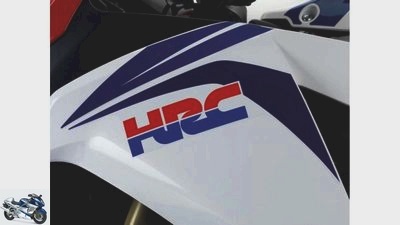
Honda
4/28
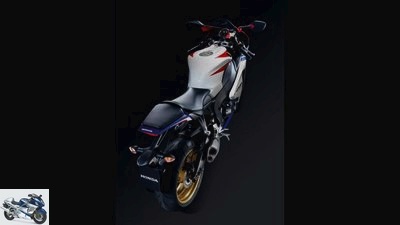
Honda
5/28
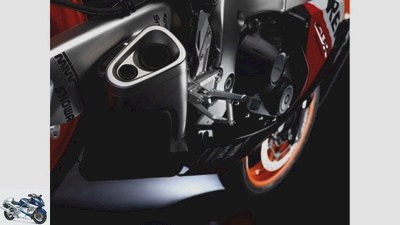
Honda
6/28
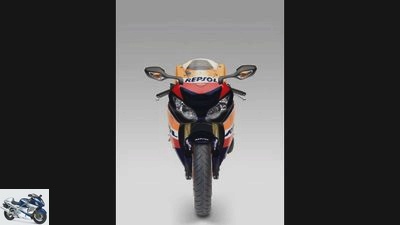
Honda
7/28
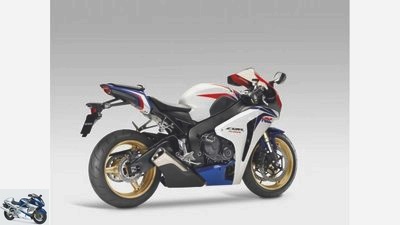
Honda
8/28
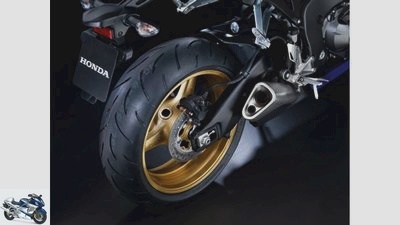
Honda
9/28
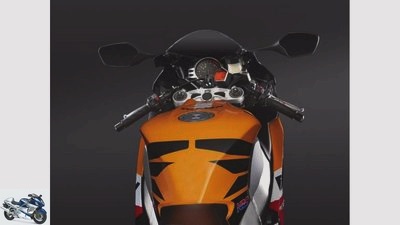
Honda
10/28
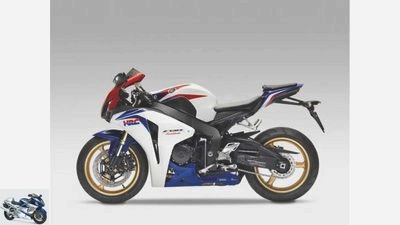
Honda
11/28
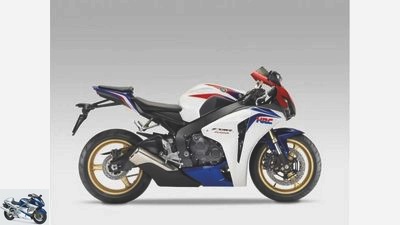
Honda
12/28
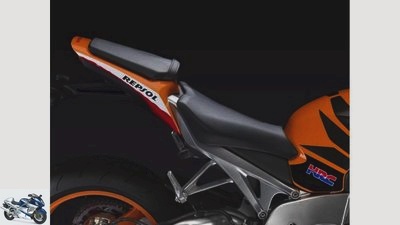
Honda
13/28
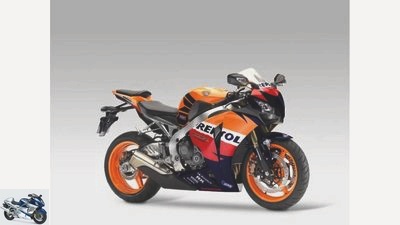
Honda
14/28
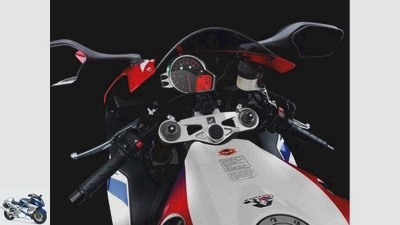
Honda
15/28
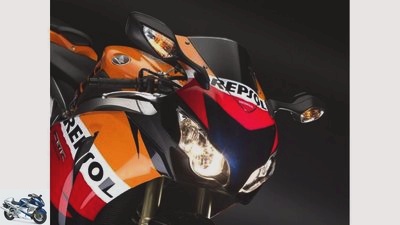
Honda
16/28
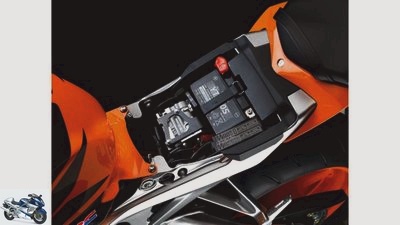
Honda
17/28
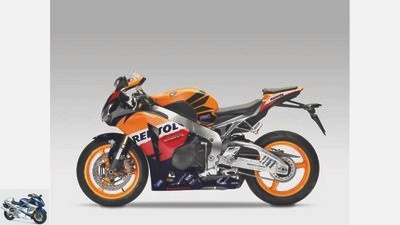
Honda
18/28
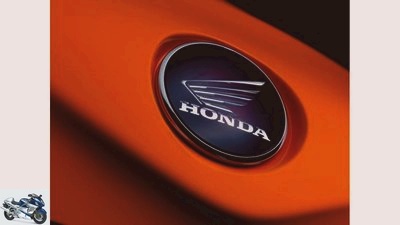
Honda
19/28
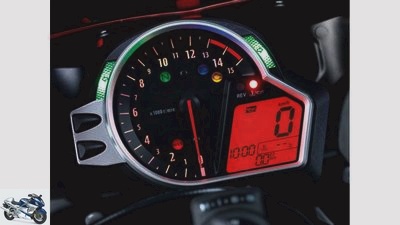
Honda
20/28
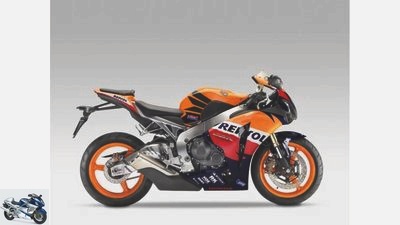
Honda
21/28
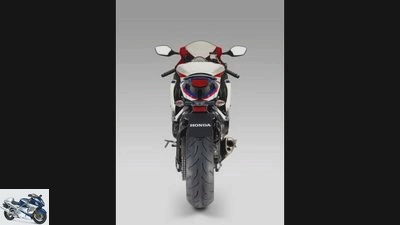
Honda
22/28
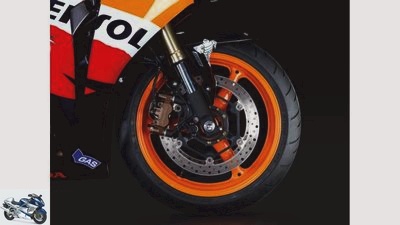
Honda
23/28
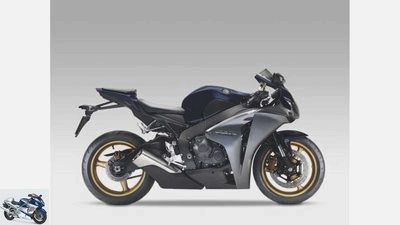
Honda
24/28
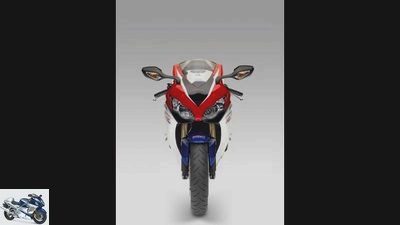
Honda
25/28
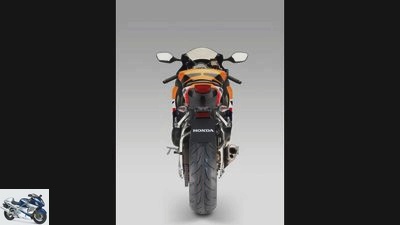
Honda
26/28
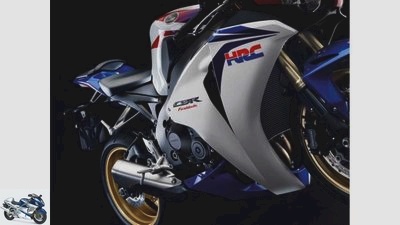
Honda
27/28
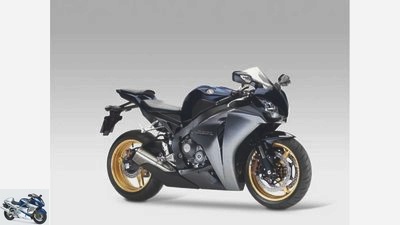
Honda
28/28
New items for 2009: Yamaha and Honda
Full R-life
Yamaha’s novelty offensive doesn’t stop: The Vmax is now followed by R1, XJ6 Diversion, XVS 950 A Midnight Star and two great 125ccs. Meanwhile, Honda is releasing the first pictures of the ABS-equipped super sports cars.
When Yamaha launched the first YZF-R1, an extremely light and extremely powerful 1000cc super sports bike, ten years ago, the world seemed to be upside down. 150 PS and 202 kilograms fully fueled? so much pressure with such a low weight, that had never been seen before in a motorcycle for everyone.
Yamaha is now daring a similar big step with the 2009 model. This is immediately clear when a Yamaha employee starts the engine at the first presentation of the new athlete. No screaming four-cylinder, rather an aggressively barking sound, a mixture of Honda VFR and Ducati 1098 reaches the ear. A special kind of aha experience. And clear proof: no stone was left unturned, the 2009 R1 is a completely new motorcycle. With a four-cylinder engine that the world has never seen in series production. With a completely redesigned chassis ?? and with a really bold design.
The new four-cylinder delivers 182 hp at 12700 rpm. Whereby that is not decisive. The decisive factor is how the engine sets these horses in motion. For the first time in a production motorcycle, Yamaha is using a crankshaft with four crankpins offset by 90 degrees so that the pistons do not move in parallel. Together with the non-uniform ignition offset of 270 ?? 180 ?? 90 ?? 180 degrees results in a more pulsating torque curve in the lower and middle speed range. This should give the driver better feedback and make it easier for him to control the powerful 115 Nm torque of the now even shorter-stroke engine.
Yamaha step on the gas
This technology, adopted from the victorious MotoGP racing machine M1, naturally needs a balancer shaft. And for each cylinder a separate map that regulates ignition and injection. It takes a lot of effort to tame the irregularity, but just right for a true top model. The familiar variable intake funnels ensure high peak performance, and a drive-by-wire system enables three different engine characteristics to be selected at the push of a button on the handlebars. Standard for normal road use, an aggressive version for the racetrack and a tame version for more leisurely trips, for example in the rain.
Amazingly, Yamaha placed the new engine much more upright than before. The cylinders are inclined 31 degrees forward, the engine is installed twelve millimeters further forward. This creates more weight on the front wheel and a slightly lower center of gravity. The engine block serves as a load-bearing element and thus increases the rigidity of the chassis. A newly designed tank that extends far below the seat and the titanium mufflers that protrude less to the rear also contribute to the concentration of the masses around the center of gravity. The rear frame is cast from magnesium. The equipment is the finest: electronically controlled steering damper, well-equipped cockpit, fully adjustable strut with separate low and high-speed damping and hydraulic spring preload, upside-down fork with one handlebar for compression, the other for rebound damping, even lighter Brake discs and workmanship that inspires down to the last detail. Yamaha specifies 206 kilograms for the 1000 cc when fully fueled. This is not a lightweight construction record, but it is within the range of the competition.
The R1 peers curiously out of its innovative projection headlights. Unusually shaped side panels direct the cooler exhaust air around the driver. The combination of the red lacquered frame, which contrasts elegantly with the white paneling, is particularly attractive. The short but rather thick mufflers dominate the otherwise slim rear end. There is no doubt: the Yamaha people have not only reissued their flagship technically, but also changed its appearance dramatically. A step worthy of a major manufacturer.
New: Honda
Two new Honda models were also featured in this issue of MOTORRAD before the editorial deadline: the CBR 1000 RR Fireblade and the CBR 600 RR, both with a completely new ABS composite braking system. Honda is the first manufacturer to take the risk of equipping sports motorcycles with such technology. A risk because, on the one hand, the drivers of such machines often prefer to trust themselves rather than an anti-lock braking system and, on the other hand, the high friction values of the tires with good grip and the short wheelbases make these machines vehemently prone to rollover. Honda now wants to counter this with a sophisticated electronic control system. Its core is an intelligent connection between the front and rear wheel brakes, which includes the dynamic changes in wheel load when braking, continuously records the brake pressure on the hand lever and pedal and converts it into actually effective brake pressures.




11 photos
Pictures: New items 2009: Yamaha and Honda
To home page
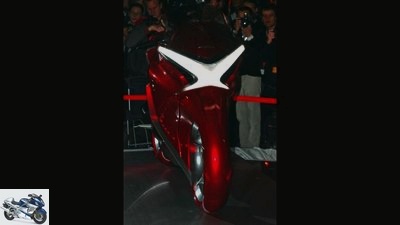
Schumann

Schumann
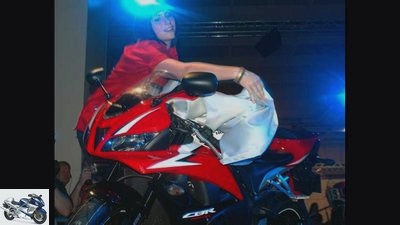
Schumann
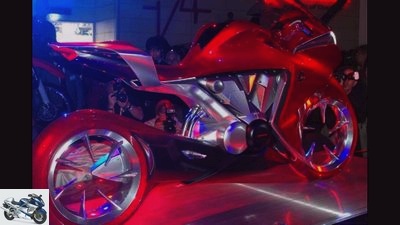
Schumann
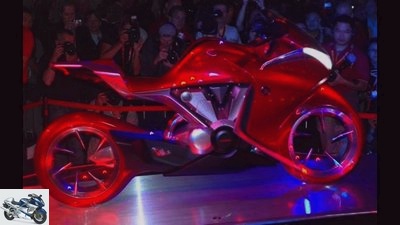
Schumann
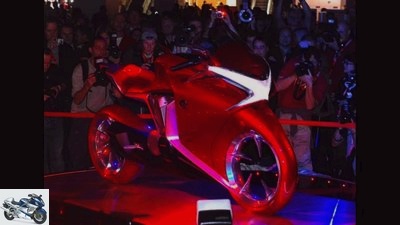
Schumann
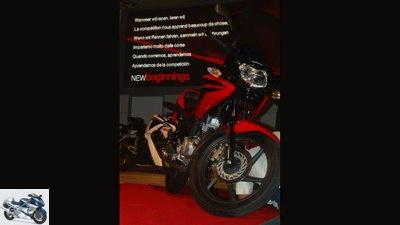
Schumann
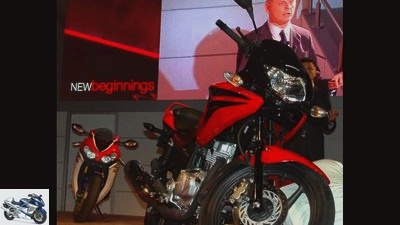
Schumann
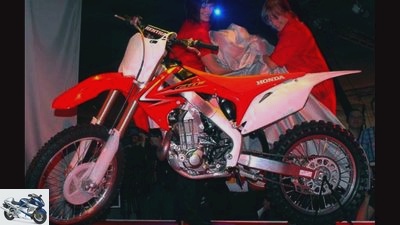
Schumann

Schumann
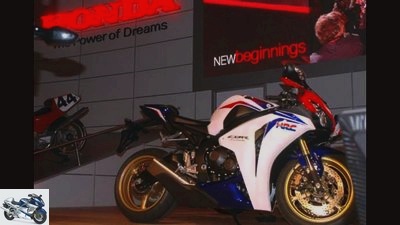
Schumann
CBR 600 RR, the engine and fairing were also optimized for the 2009 season. Modified pistons, cylinder head and exhaust system should increase the torque between 8000 and 12000 rpm by 3.5 percent. Despite the thicker lining keel for better noise insulation, the weight remains at 184 kilograms. How much the ABS weighs has not yet been found out, nor how high the surcharge will be.
Yamaha WR 125 X / R




15th photos
Pictures: New items 2009: Yamaha and Honda
To home page
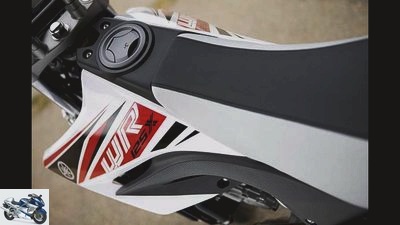
Yamaha
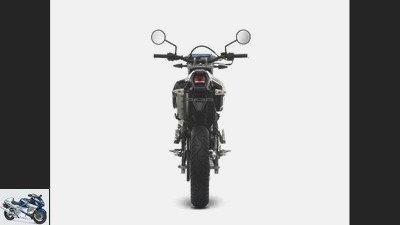
Yamaha
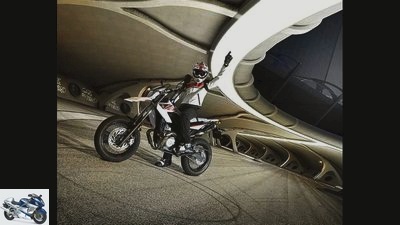
Yamaha

Yamaha
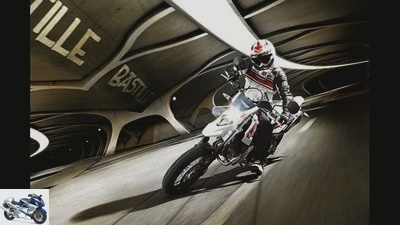
Yamaha
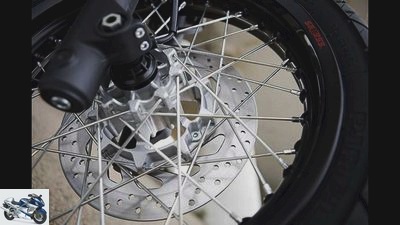
Yamaha
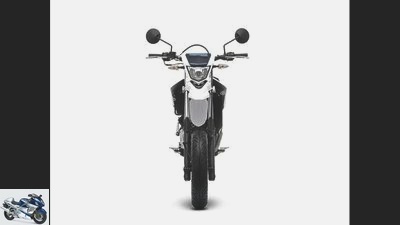
Yamaha
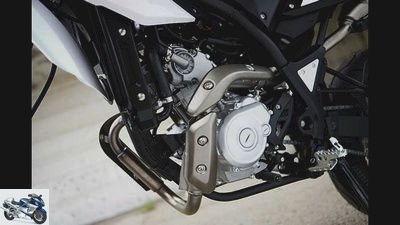
Yamaha
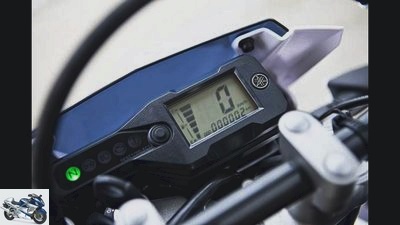
Yamaha
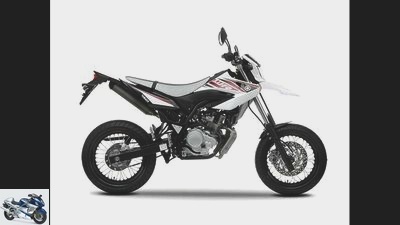
Yamaha
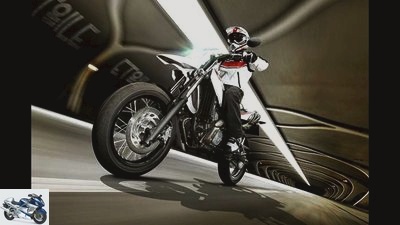
Yamaha

Yamaha

Yamaha
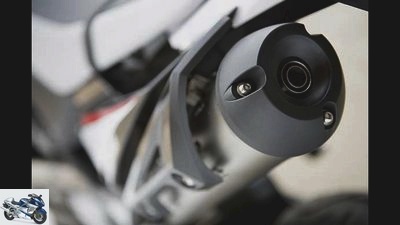
Yamaha
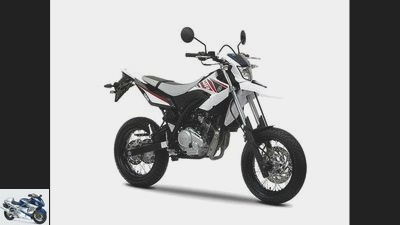
Yamaha
Yamaha XJ6 Diversion ABS




12th photos
Pictures: New items 2009: Yamaha and Honda
To home page

Yamaha
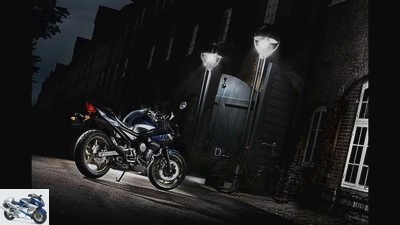
Yamaha
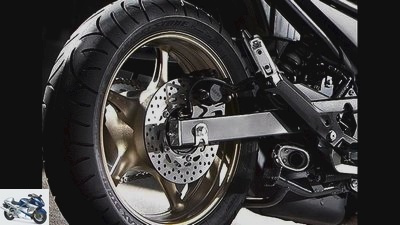
Yamaha
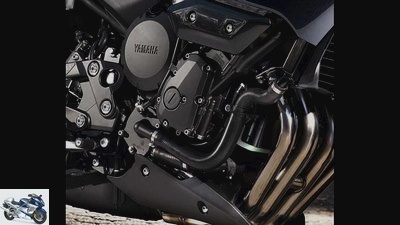
Yamaha
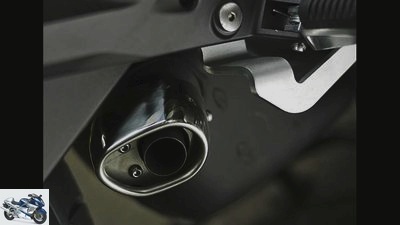
Yamaha
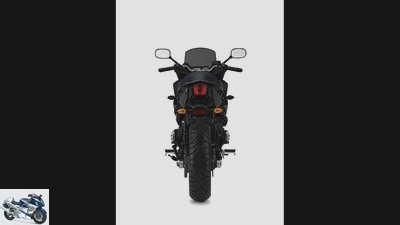
Yamaha
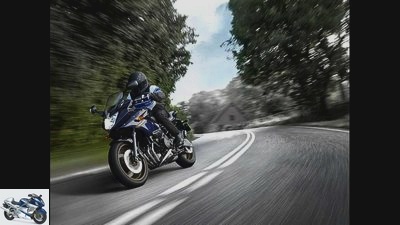
Yamaha

Yamaha
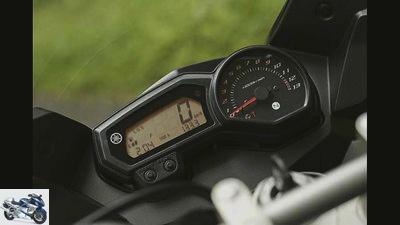
Yamaha
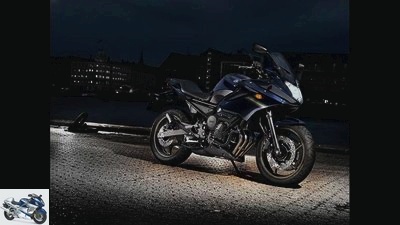
Yamaha
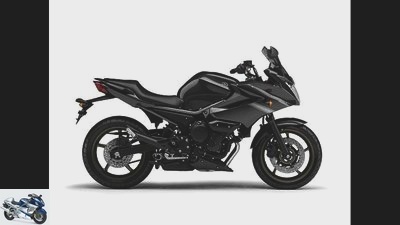
Yamaha
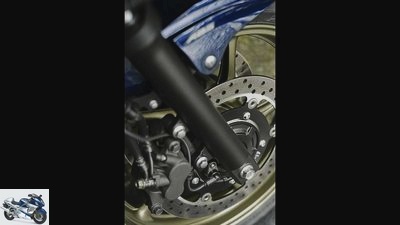
Yamaha
XJ6 Diversion now wants to win again what one simply gave up years ago. Tens of thousands of XJ 600 Diversion were sold in the 1990s. The Fazer 600, presented in 1998, could no longer connect to this, and certainly not the current, sporty FZ6 Fazer in the version simply throttled to 78 hp via a gas stop. The 600 all-rounders Honda CBF 600 S, Kawasaki ER-6f and Suzuki Bandit 650 S do business. Yamaha now wants to get involved again with the new one. This required real downsizing of the former R6 drive to the low-insurance 78 PS class and extensive conversion work. With a new cylinder head with slimmer ducts and tamer camshafts, the engine has now been made suitable for everyday use, replacing the complex aluminum frame with a robust, slim and inexpensive tubular steel chassis. A towering, frame-mounted half-fairing, together with the comfortably styled bench, ensure that it is suitable for touring.
There is a three-way catalytic converter in the muffler installed under the engine. In addition, compared to the Fazer, the XJ6 received a smoother clutch and a revised shift mechanism to make gear changes smoother. Yamaha promises that when fully fueled, the machine can be moved extremely easily, and can therefore also be safely controlled by beginners. In Germany, the XJ6 Diversion is only available with ABS, which is a much more modern system than the previous FZ6-ABS. Equipment without costly extras and a technically less complex design let us hope that with the XJ6 Diversion, Yamaha again has a real price breaker in its range. Not more than 7000 euros including ABS would be a good offer.
Yamaha XVS 950 A Midnight Star




13 photos
Pictures: New items 2009: Yamaha and Honda
To home page
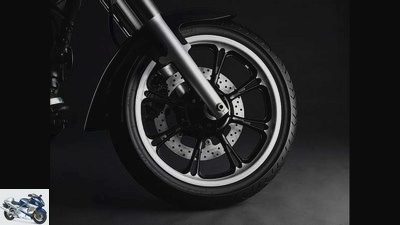
Yamaha
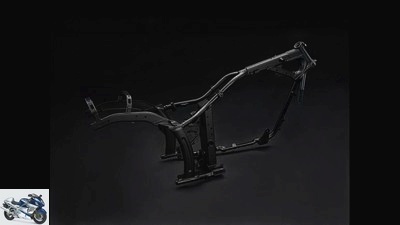
Yamaha
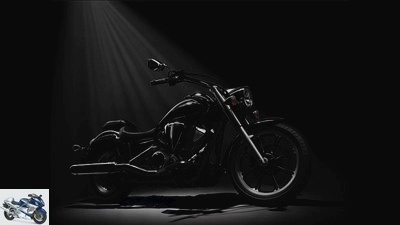
Yamaha
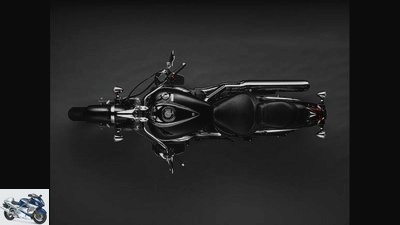
Yamaha
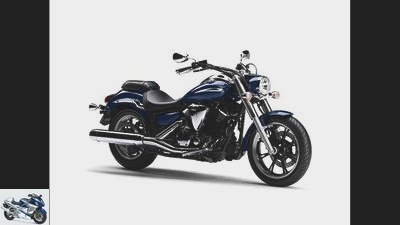
Yamaha
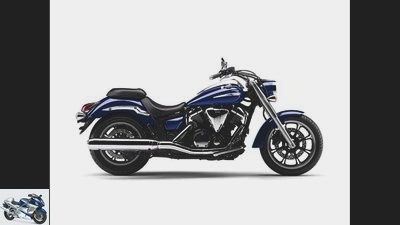
Yamaha
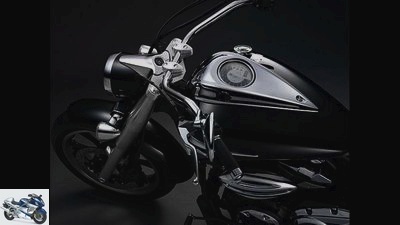
Yamaha
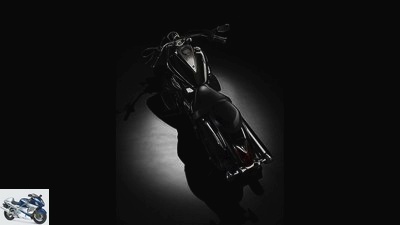
Yamaha
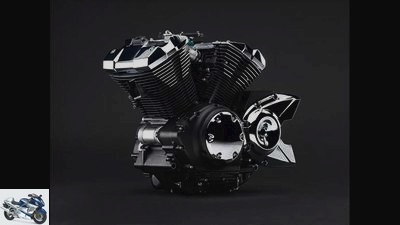
Yamaha
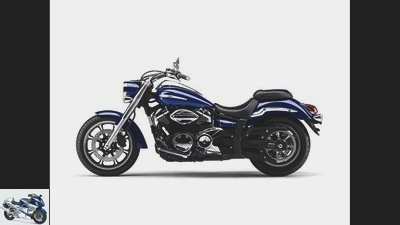
Yamaha
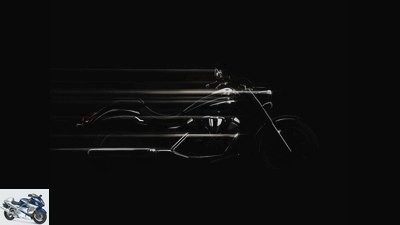
Yamaha

Yamaha
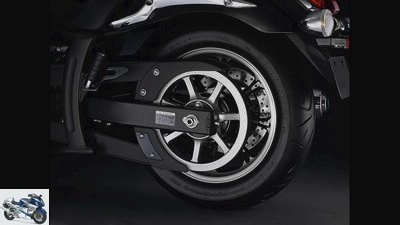
Yamaha
Data Yamaha YZF-R1
Yamaha
Hypnotizing: the headlights of the new R1.
Engine:
water-cooled four-cylinder four-stroke in-line engine, 90 degree crank pin offset, two overhead, chain-driven camshafts, four valves per cylinder, bucket tappets, wet sump lubrication, injection, regulated catalytic converter, multi-disc oil bath clutch (anti-hopping), six-speed transmission, O-ring chain, bore x stroke 78.0 x 52.2 mm, displacement 998 cm³, compression ratio 12.7: 1, rated output 133.9 kW (182 PS) at 12500 rpm, max. Torque 115.5 Nm at 10000 rpm.
Landing gear:
Bridge frame made of aluminum, adjustable upside-down fork, Ø 43 mm, two-arm swing arm made of aluminum, adjustable central spring strut with lever system, double disc brake at the front, Ø 310 mm, disc brake at the rear, Ø 220 mm, tires 120/70 ZR 17, 190/55 ZR 17.
Mass and weight:
Wheelbase 1415 mm, steering head angle 66.0 degrees, caster 102 mm, seat height 835 mm, spring travel f / r 120/120 mm, weight fully fueled 206 kg, tank capacity 18.0 liters.
Colours:
White, blue, black
Data Yamaha WR 125 X / R
Yamaha
The 15 hp single cylinder also works in the sporty YZF-R 125 and has been optimized for off-road use.
Engine:
Water-cooled single-cylinder four-stroke engine, an overhead, chain-driven camshaft, four valves, rocker arm, injection, Ø 28 mm, regulated catalytic converter, multi-plate oil bath clutch, six-speed gearbox, chain, bore x stroke 52.0 x 58.6 mm, displacement 124.7 cm³, compression ratio 11.2: 1, rated output 11.0 kW (15 PS) at 9000 rpm, max. Torque 12.2 Nm at 8000 rpm.
Landing gear:
Double loop frame made of steel, telescopic fork, Ø 41 mm, two-arm swing arm made of aluminum, adjustable central spring strut with lever system, front disc brake, Ø 298 (240) mm, rear disc brake, Ø 220 mm, tires 110 / 70-17, 140 / 70-17 (80 / 90-21, 110 / 80-18).
Mass and weight:
Wheelbase 1430 mm, steering head angle 64.5 (63.0) degrees, caster 78.5 (107) mm, seat height 920 (930) mm, spring travel f / r 210/230 (240/230) mm, weight with a full tank 137 (133 ) kg, tank capacity 8.5 liters.
Colours:
Blue, white (blue, black)
Figures for the Yamaha WR 125 R in brackets
Data Yamaha XVS 950 A Midnight Star
Yamaha
Easy to drive mid-range cruiser with a newly designed, air-cooled 60-degree V2 engine.
engine
Air-cooled two-cylinder four-stroke 60-degree V-engine, one overhead, chain-driven camshaft, four valves per cylinder, rocker arm, wet sump lubrication, injection, Ø 35 mm, regulated catalytic converter, multi-disc oil bath clutch, five-speed gearbox, toothed belt, bore x stroke 85.0 x 83.0 mm, displacement 942 cm³, compression ratio 9.0: 1, rated power 39.4 kW (54 PS) at 6000 / min, max. Torque 76.8 Nm at 3000 rpm.
landing gear
Double loop frame made of steel, telescopic fork, Ø 41 mm, two-arm swing arm made of steel, central spring strut with lever system, front disc brake, Ø 320 mm, rear disc brake, Ø 298 mm, tires 130 / 70-18; 170 / 70-16.
mass and weight
Wheelbase 1685 mm, steering head angle 57.9 degrees, caster 145 mm, seat height 675 mm, spring travel f / r 135/110 mm, weight with a full tank of 278 kg, tank capacity 17.0 liters.
Colours
Dark blue, dark red, black
Data Yamaha XJ6 Diversion ABS
Yamaha
In Germany the XJ6 is only available with ABS.
engine
water-cooled four-cylinder four-stroke in-line engine, two overhead, chain-driven camshafts, four valves per cylinder, bucket tappets, wet sump lubrication, injection, regulated catalytic converter, multi-disc oil bath clutch, six-speed gearbox, O-ring chain, bore x stroke 65.5 x 44.5 mm, displacement 600 cm³, compression ratio 12.2: 1, rated power 57.0 kW (78 PS) at 10,000 rpm, max. Torque 59.7 Nm at 8500 rpm.
landing gear
Bridge frame made of steel, telescopic fork, Ø 41 mm, two-arm swing arm made of aluminum, central spring strut with lever system, double disc brake at the front, Ø 298 mm, disc brake at the rear, Ø 245 mm, ABS as standard. Tires 120/70 ZR 17; 160/60 ZR 17.
mass and weight
Wheelbase 1440 mm, steering head angle 64.0 degrees, caster 103.5 mm, seat height 785 mm, suspension travel f / r 130/130 mm, weight fully fueled 216 kg, tank capacity 17.3 liters.
Colours
Dark blue, graphite gray, red
Related articles
-
Artist Comparison test middle class Honda Hornet S. Kawasaki ZR-7 S. Suzuki GSF 600 S Bandit Yamaha FZS 600 Fazer Born to be mild Four days, 1913…
-
Gargolov Comparison test big bikes: Honda CBR 1100 XX Super Blackbird, Kawasaki Ninja ZX-12R, Suzuki GSX 1300 R Hayabusa, Yamaha FJR 1300 A Two fast, two…
-
Comparison test BMW K 1200 GT, Honda Pan European, Yamaha FJR 1300 A
Gargolov Comparison test BMW K 1200 GT, Honda Pan European, Yamaha FJR 1300 A Flying Dutchmen The opportunity has never been better: three express…
-
Comparison test Honda CB 650 F, Yamaha TRX 850, Suzuki SV 650 S and Yamaha MT-07
fact 21st photos fact 1/21 A huge boost to the parallel twin: the registered flat slide carburetor from Mikuni. fact 2/21 Despite the changed deflection,…
-
Honda, Yamaha, Suzuki, Kawasaki and KTM
Manufacturer 16 photos 1/16 2/16 3/16 4/16 5/16 6/16 7/16 8/16 9/16 10/16 11/16 12/16 13/16 14/16 15/16 16/16 Honda, Yamaha, Suzuki, Kawasaki and KTM The…
-
Honda, Kawasaki, Suzuki, Yamaha, Triumph
Jahn Honda, Kawasaki, Suzuki, Yamaha, Triumph Test of the 600 super sports car But that’s enough now, the Kawa boys decided. It’s time for something new….
-
Single cylinder in comparison: Honda XBR 500 and Yamaha SRX 6
Bilski On the move: Honda XBR 500 and Yamaha SRX 6 Single cylinder in comparison: Honda XBR 500 and Yamaha SRX 6 Content of Is less motorcycling more…
-
Honda CB 1300, Suzuki Bandit 1250, Yamaha XJR 1300
Gargolov Honda CB 1300, Suzuki Bandit 1250, Yamaha XJR 1300 Comparison test of big bikes With a weight of five hundred pounds, a cubic capacity of 1,300…
-
Comparison test Honda CB 1300 S, Suzuki Bandit 1200 S, Yamaha FZ1 Fazer
Bilski Comparison test Honda CB 1300 S, Suzuki Bandit 1200 S, Yamaha FZ1 Fazer Search for clues They share their sporting roots. At Honda in terms of…
-
Generation comparison: Honda RVF 750, Fireblade, Yamaha YZF-R7, YZF-R1
fact Generation comparison: Honda and Yamaha Superbikes then and now in comparison Content of What can the noble homologation models of the Superbike…